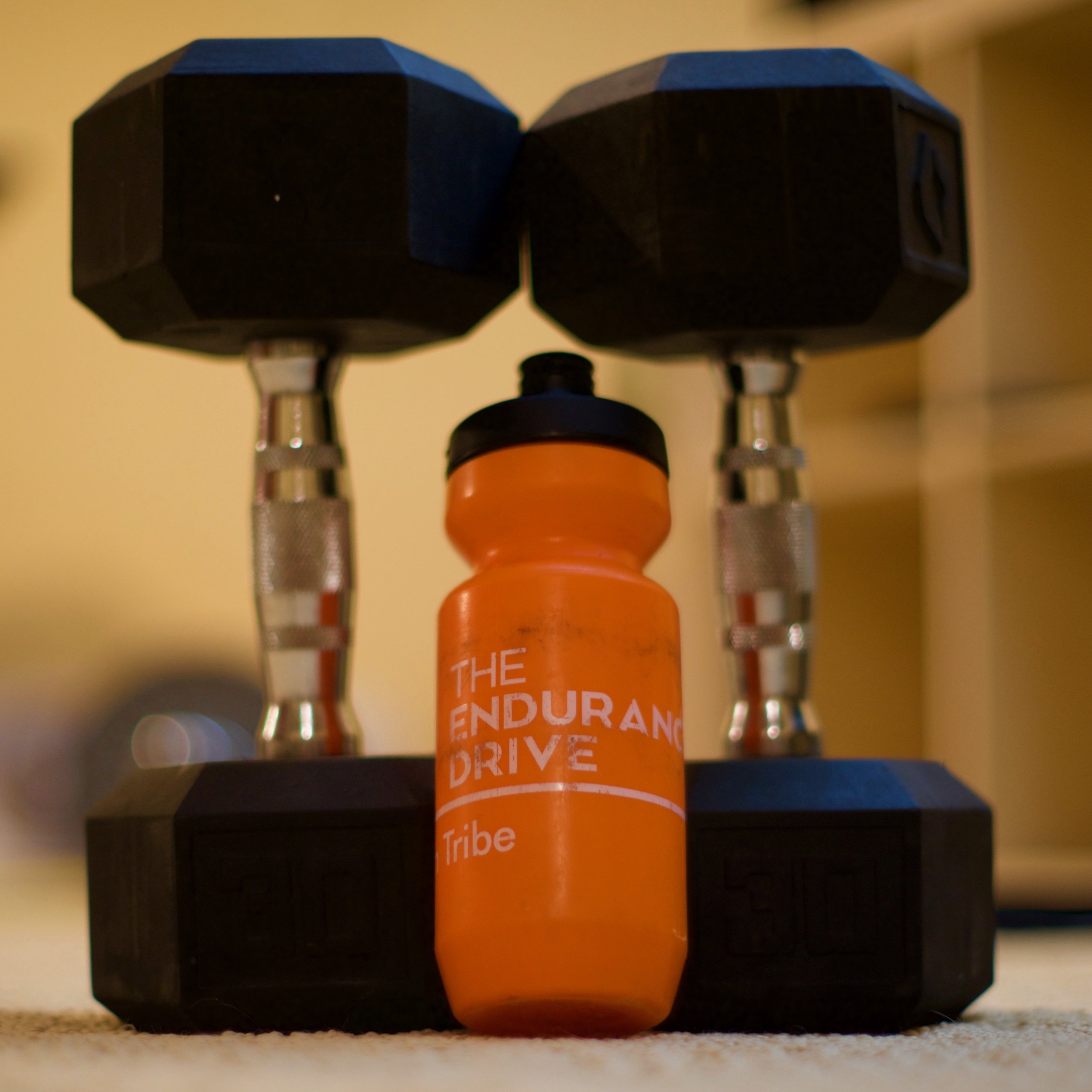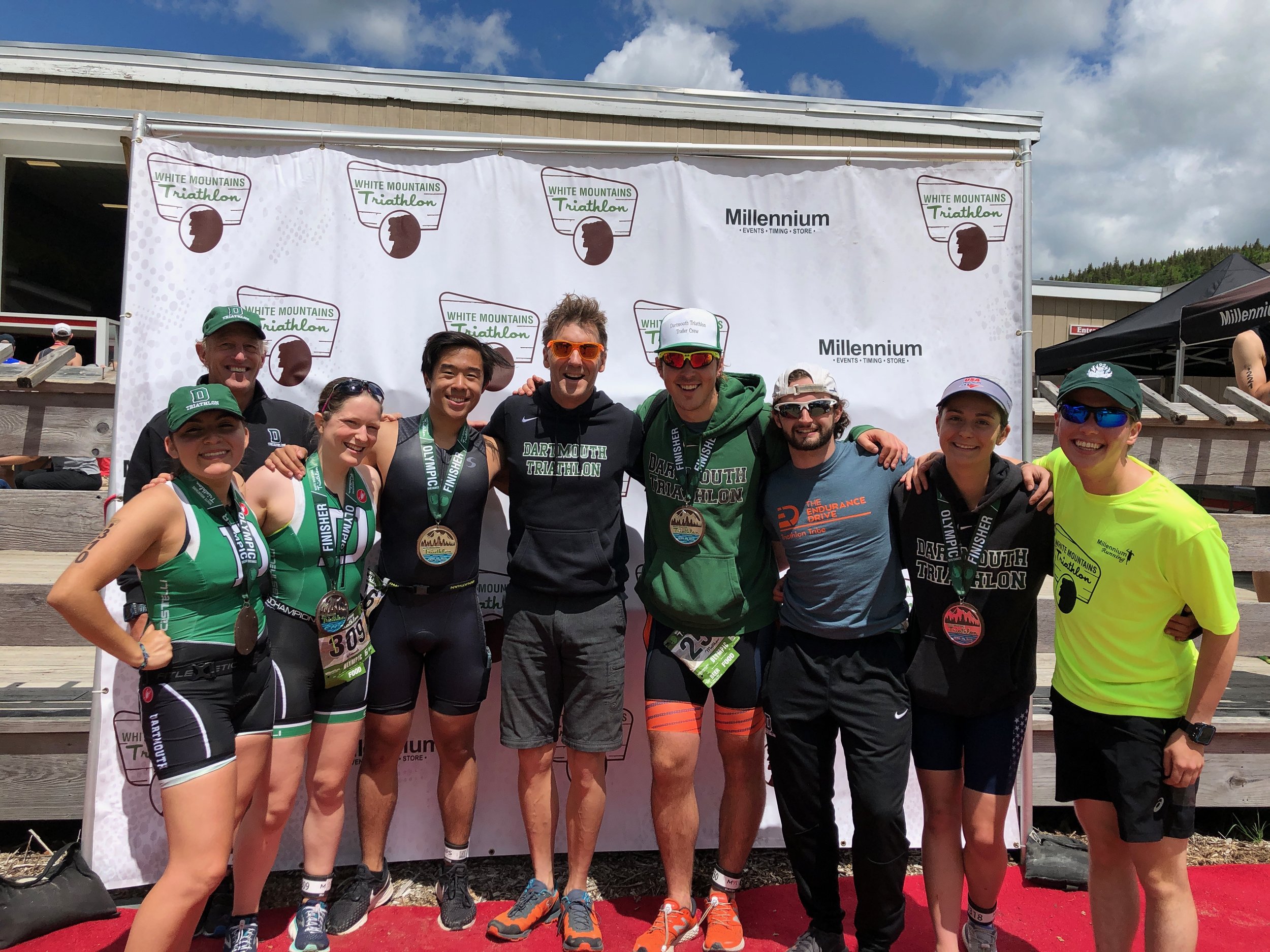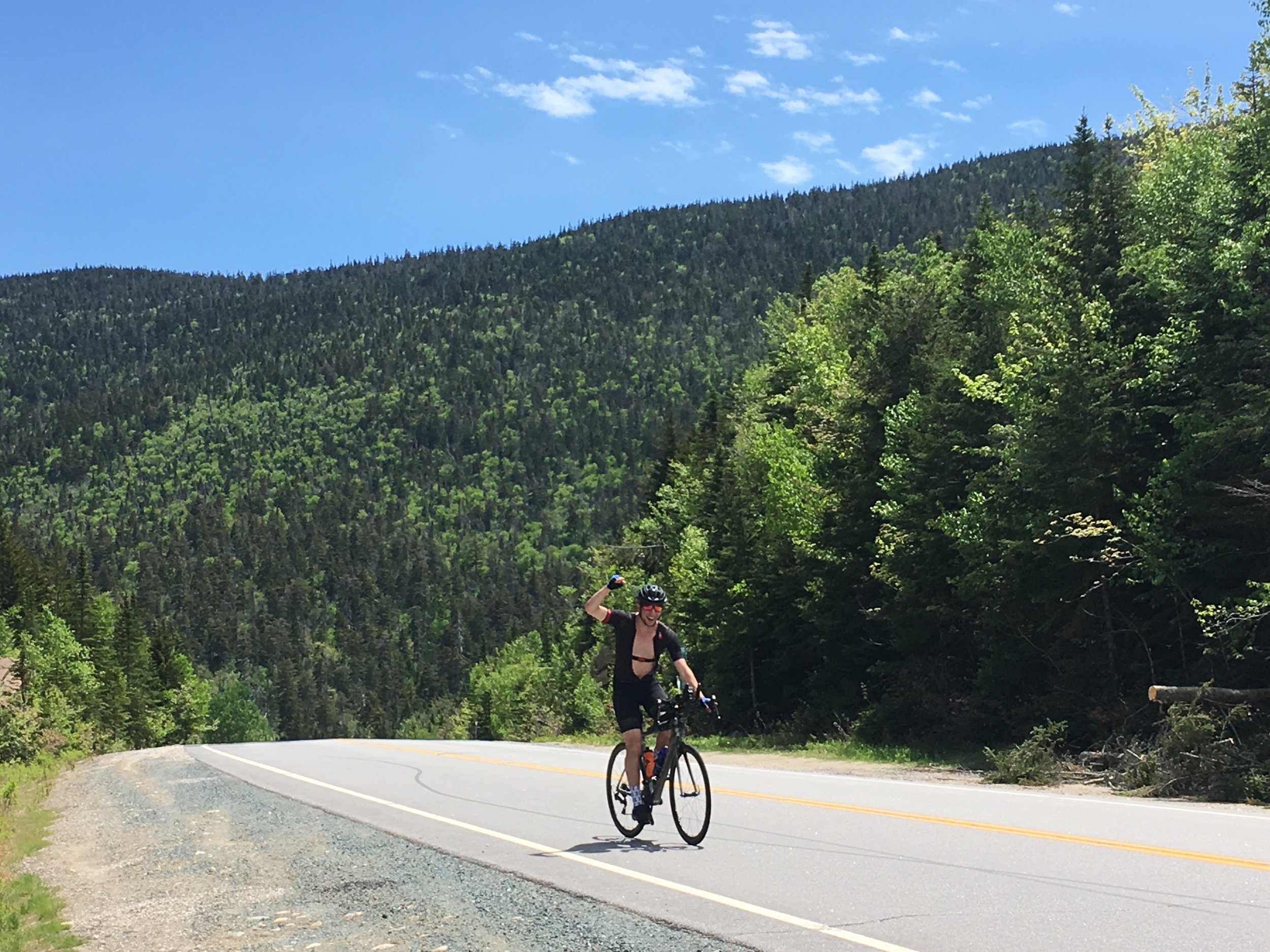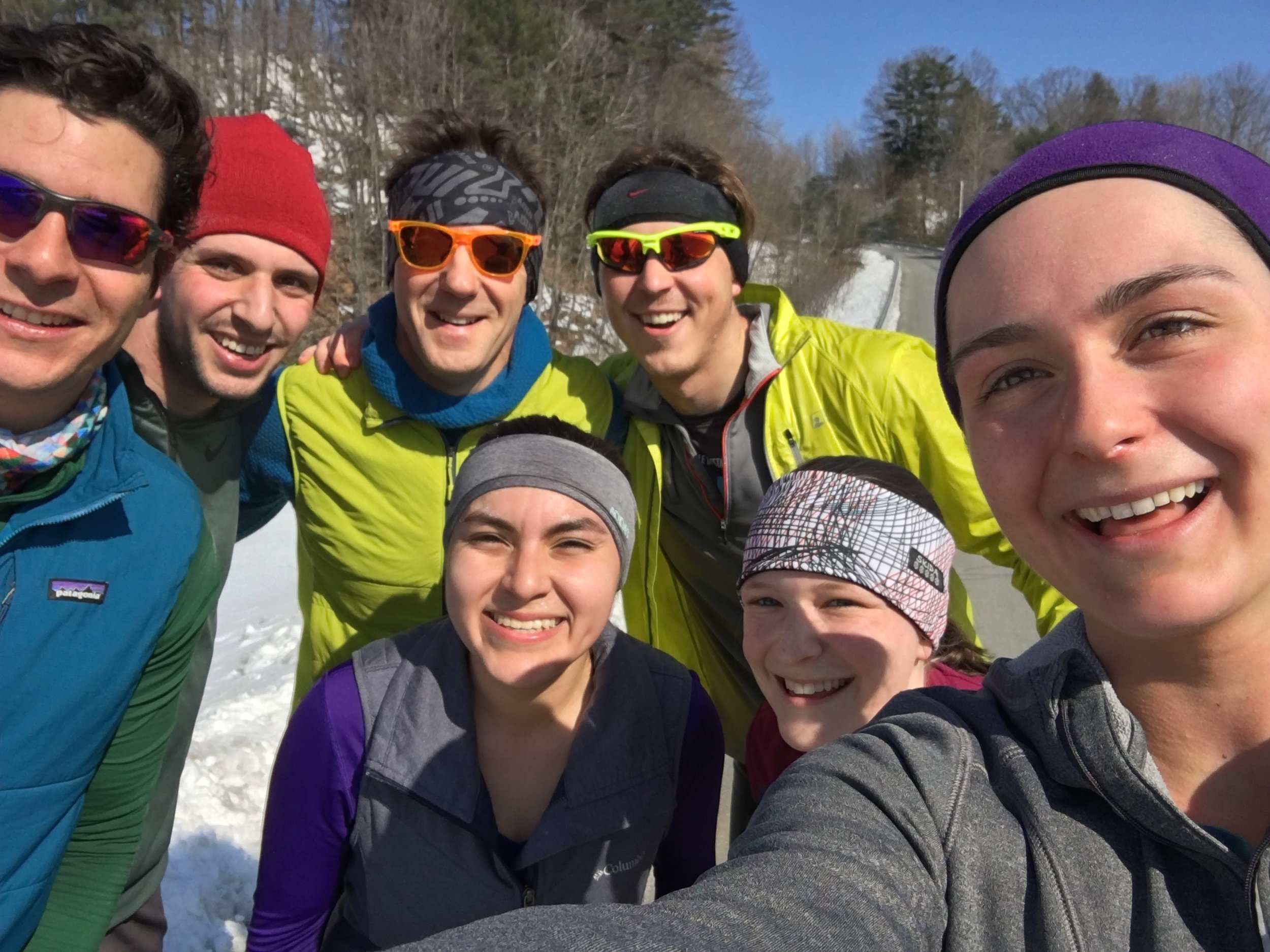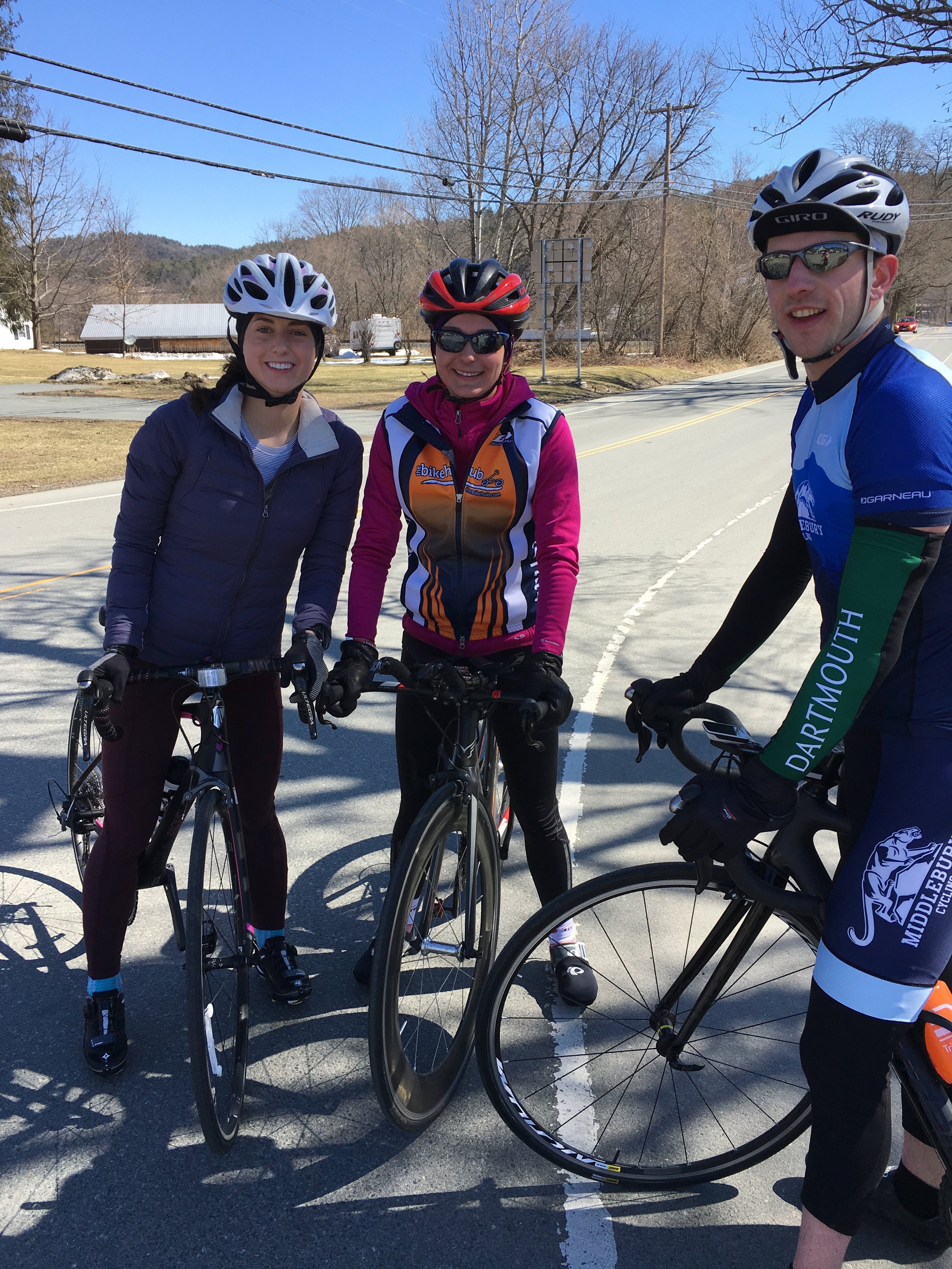2019 IRONMAN Lake Placid Race Report by Katie Clayton
IRONMAN Lake Placid is done and dusted! After dreaming about crossing the Placid finish line for over a year and a lot of training (in 2019 alone I ran swam 296,222 yards, biked 4397 miles, and ran 932 miles), I’m pleased to report that IRONMAN Lake Placid was a success. I finished with a smile and punched my ticket to the October IRONMAN World Championships in Kona. Here are my thoughts on the course, the experience, and my plans until the next one!
Taper: I have a tendency to go into big training weekends and even some races with some built-up fatigue, but Jim made sure that I was fully rested for Placid. After months of 18+ hour training weeks, it was a huge change to go out for a 45-minute spin and call it a day, but I knew that the rest would pay off. I made it my priority to sleep a ton, eat a ton, and de-stress, and seeing my heart rate nice and low on the workouts confirmed that the taper was working. By the time we left for Placid, I was antsy and ready to channel all of my pent-up energy into the race.
Swim: Fast forward to the line-up for the 2.4 mile swim in Mirror Lake. Matthew, Chris and I got as close as we could to the front of the corral so we could start the swim in one of the earlier waves. Jim told us that most people tend to overestimate their swim time, so it’s best to start out up front. Chris lined up with the swimmers under an hour and Matthew and I were right behind him in the 1:01-1:10 group. The gun went off at 6:40, and we were in the water with the rolling start by 6:41.
I was immediately struck by how many people were near me, but I tried to stay calm and find the underwater cable as soon as possible. There was lots of splashing and thrashing going on and I was kicked a few times as everyone found their groove. Once I got on the cable, I was surprised to see how many people were swimming to my left (avoiding the cable) -- it seemed just as crowded over there. I kept my eyes down and tried to swim smooth without overdoing it.
The one disadvantage to swimming on the cable is that if you don’t sight, you won’t know when buoys are approaching, so I was pushed under a few of the big yellow triangles as I tried to swim through them. It was a little jarring at first but I tried to do a better job of picking my head up occasionally and/or not breaking my stroke if I hit a buoy.
By the time I reached the first right hand corner, my left goggle had filled with water so I quickly picked my head up to fix it. Then as I made the turn I momentarily lost the cable, and it took me a little while to fight my way back onto it. Once I did, I came back around, finished the first loop, tried to fix my goggles again as I exited and then re-entered the water, and started all over.
The second loop wasn’t as strong as the first; I felt fine, but most of the people around me on the cable seemed to be going much slower than they had on their first loop and I felt like I was at the mercy of the speed of traffic. I tried to fight my way around people who were particularly slow or who were splashing a lot or kicking too hard, but I ultimately decided that the energy it took to do that wasn’t worth the seconds I would save. After getting kicked and tangled in the turn buoys at least three or four more times, I backed off the pace and tried to just cruise in for the bike. Swim time was 1:11:06, and while I would have liked to go under 1:10, I really was at the mercy of traffic and I was just happy to be out of the water.
T1: Once I got out of the water, some awesome wetsuit strippers helped me get my wetsuit off, and then I jogged down the blue carpet to transition. I passed the entire crew of Dartmouth supporters who were awesome and totally put a smile on my face. I grabbed my bike bag, got some help from some volunteers in the change tent to put on shoes, socks, helmet, and sunglasses, and before I knew it, I was on the bike course.
Bike: My heart rate was high as soon as I started the bike, and unfortunately it never really came down. I’m not sure if it was the swim, the excitement, the caffeine, or some combination of the three, but I kept seeing my HR in the 150s even though my watts weren’t out of control. Usually it stays fairly low in training (at The Endurance Drive Ironman Lake Placid training weekend I averaged 140 on the 112-mile course at race watts), so I was a little concerned about it and unsure whether to trust my HR or watts. I ultimately decided that watts was a more reliable metric so I focused on aiming for a normalized power (NP) of 160-170 watts - our race plan. Those watts came easily in the first hour on the climbs out of Placid. I focused on floating the uphills and crushing the descents (especially the Keene descent) and was happy to see that I was riding alongside some fast-looking people. Overall, the first lap felt good and was largely uneventful, and I came back into town in 2:52 (almost 20 minutes faster than my training weekend) with 164 NP for the lap.
I stayed on top of nutrition with a bottle of Skratch and a Larabar in the first hour, a bottle of Infinit in the second hour, and a bottle of Skratch and a Clif bar in the third hour. I switched out my bottles at bike special needs for two Infinit and one Skratch after lap 1 and headed out on lap 2, where I was excited to see the entire support squad at Run Aid Station #2 cheering me on and my parents in the car coming into Placid from Sleepy Hollow near River Rd. It was after leaving town again that I started to feel the first loop, though, and I decided to back off the pace and watts so I could try to get my HR down. I was getting increasingly worried about the run because my HR had been in Zone 3 for most of the day, and I didn’t want to end up walking the marathon. I got it down to 150 and below, but my watts were definitely lower by then and I knew my pace wasn’t as strong as the first loop.
Morale had been pretty low from the Haselton Road turnaround to the top of the Papa Bear hill. I kept up with nutrition and hydration (one bottle of Infinit during hours 4 and 6, a Bonk Breaker and a bottle of Skratch during hour 5), but there was a strong headwind from Haselton Road to the end that made me feel like I was riding a trainer. I ended up making friends with a couple of people who were struggling along with me and commiserating over we were all so ready to get off the bike. After my loop 2 from hell, total bike time was 6:01:34, 159 NP.
T2: Coming back into town at the end of lap 2 was awesome - the spectators were fantastic and I was SO HAPPY to give my bike away to the volunteers in transition and get my run shoes on. I made a quick stop at the port-a-potty, switched shoes, grabbed my gels, race belt, and hat, and I was off.
Run: My legs felt a little bit like jelly as I came down the hill by Lisa G’s, but they weren’t as bad as I thought they would be. I was able to throw down a few 8-minute miles without my heart rate spiking and I got a huge morale boost with all of my friends at the mile 2 run aid station. I saw Jim soon after that and he let me know that there was one girl in my AG who was 27 minutes up the road. That was actually pretty comforting because I didn’t feel like I needed to push it to catch her (the lead seemed way too big for an AG win to be realistic), and I was happy with a second-place AG finish for my first Ironman. I continued on down the hill and turned left onto River Rd., jogging through each aid station to grab hydration and nutrition.
I had a little bit of a side stitch and was feeling nauseous, so I couldn’t easily stomach the gels I had brought with me. I grabbed coke and base salt at the aid stations instead, and those went down easily. Unfortunately, my HR was spiking above 160 and it was getting really hot out, so I decided to tone down the pace to see if I could get my HR below the 155 cap Jim and I had planned. I ran an 8:45, then was above 9:00/mile, and I was feeling pretty bad but determined I could hold a pace in the 9s at a reasonable (155-160) HR. I continued to grab coke and salt and not walk the aid stations because I worried that if I started to walk, I wouldn’t start running again.
After finishing up the River Rd. section, I jogged back up the big hill and ran into Jim at mile 9ish. He informed me that the age grouper ahead of me was running 11s and 12s, and her lead had shrunk to 16 minutes. He told me to just keep doing what I was doing, running 9s without my HR blowing up and taking in whatever I could at the aid stations, so I did. I grabbed ice to throw down my shirt and dumped water on my head whenever I had the chance, and I kept the pace and HR steady. I ran up the Lisa G’s hill (which honestly was not as bad as I thought it would be), did the Mirror Lake Drive portion and saw more friends and family, and then headed out for lap 2.
I realized my shoe was untied at mile 13, so I stopped right before going back down the Lisa G’s hill to tie it and nearly fell over, but I righted myself and kept it up. When I saw Jim next at mile 15, he said I was only 6 minutes behind my competitor. If neither of our paces changed, I would catch her. But I was hurting big time, and walking sounded more and more appealing with every aid station. I also missed the coke at a few aid stations and only took in ice water with poor hand-offs, so I was worried about my nutrition and hydration status. Still, I gritted my teeth and kept running with my eye on the number on everyone’s calves for someone in my age group.
As I came down River Rd., I got a little bit of a second wind and continued to throw down 9s with a little less pain. Finally, just before the turnaround, I saw the girl who I thought was my competitor ahead. She was running, but my shuffle was faster than her shuffle, so I passed by her (we both gave each other some encouragement) and hit the turnaround. I didn’t look back after that, but I picked up the pace by a little bit out of fear that she would chase me down.
By the time I made it off River Rd., I knew I had built up a bit of a lead, but I was really worried about my hydration and nutrition status. I was starting to feel dizzy and I didn’t want to pass out or DNF with so little to go. For the first time on the run, I walked up half of the hill after River Rd. just to keep my HR in control. I started running again as soon as I reached the top and met Jim and Connor around mile 22. While I couldn’t smile, I was happy that they were blasting my favorite songs on their portable speaker. Jim yelled that I had an 11-minute lead and reminded me to keep fueling, keep hydrating. I was pretty close to my breaking point but I continued on, ready to taste the finish.
By the time I got to the Lisa G’s hill I was pretty much done, so I speed-walked up part of it to avoid passing out and clocked my first 10-minute mile of the day, but I was able to pick it up again after getting to the top. My parents and friends were cheering on Mirror Lake Drive, and as I made it to the out-and-back I knew that all I needed to do was run another mile - just one. I rounded the corner, picked up the pace to sub-9s, and laid down everything I had left. I entered the transition area, rounded the track, and saw all of my friends and family along the finishing chute. I somehow managed to smile, and I crossed the finish line with a run time of 3:59:51. I then promptly semi-collapsed into Matthew’s parents’ arms (they were volunteering at the finish) and was carted into the med tent where I made friends with some amazing volunteers who were the first to hear me say, “I think I just qualified for Kona.” Total finish time: 11:22:19.
After: I was fine after I cooled down and got some fluids in me, and getting to hang out on the grass with my friends and family, watch Matthew, Chris, and Julie finish, and relive the whole experience for days after was arguably even better than the race, which was physically and mentally agonizing. Despite the agony of 140.6 miles, I decided to take the Kona slot, because I think that after a few more days of relaxing and active recovery only, I’ll be ready to get back into training mode. After all, this is the IRONMAN World Championships we’re talking about! It’ll be a little crazy to balance more Ironman training with a move out to California in a month and the start of my PhD program in political science at Stanford, but come on - it’s Kona!!!
Thanks a million to Jim and the tribe for everything they have done to support me on this journey. I’m pumped that it isn’t over yet! - Katie Clayton



